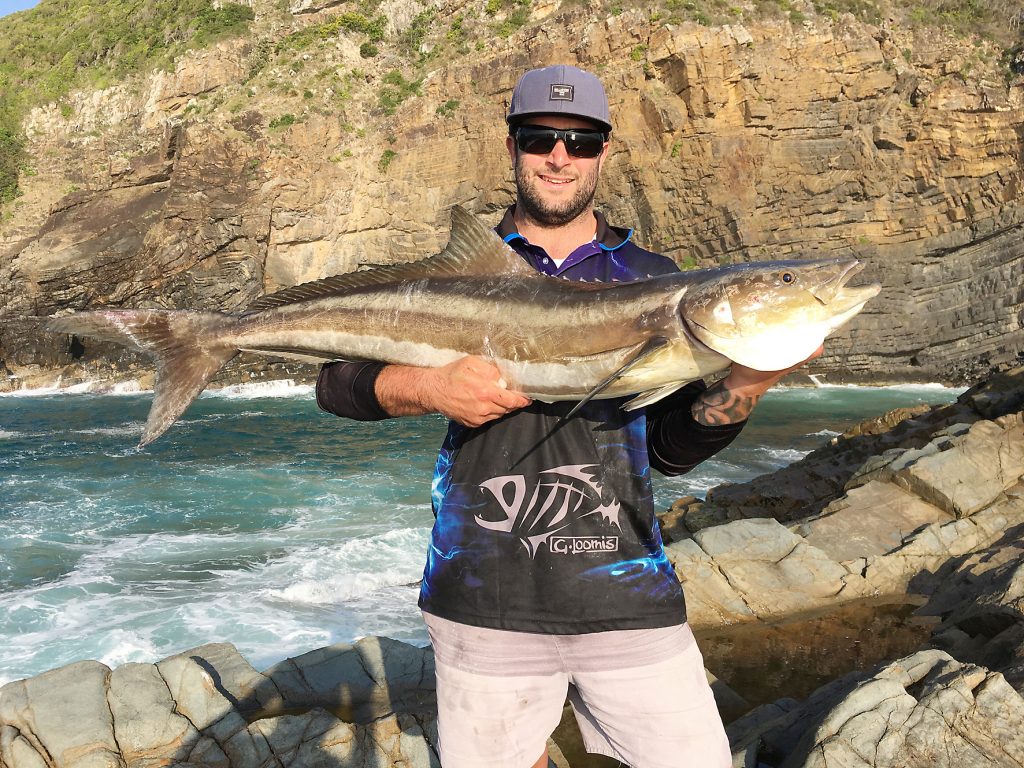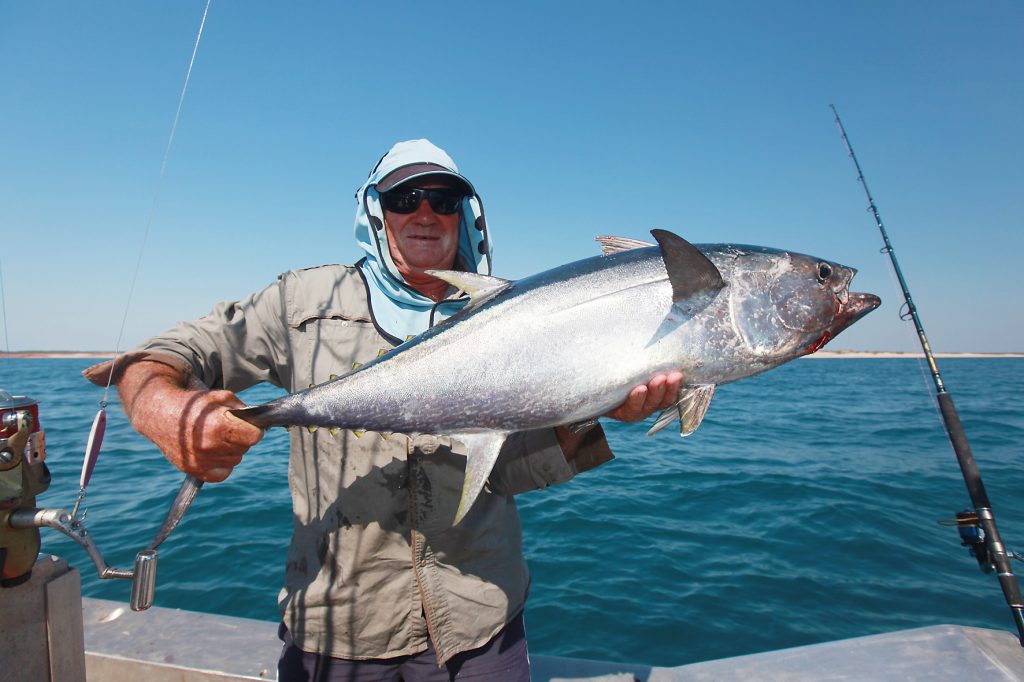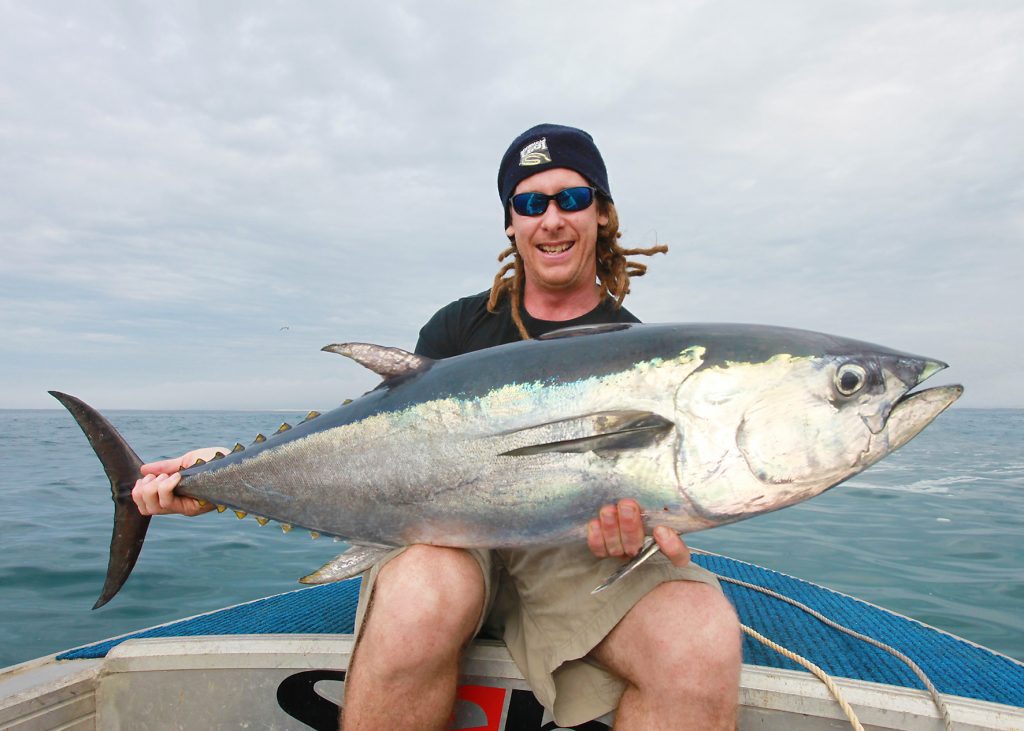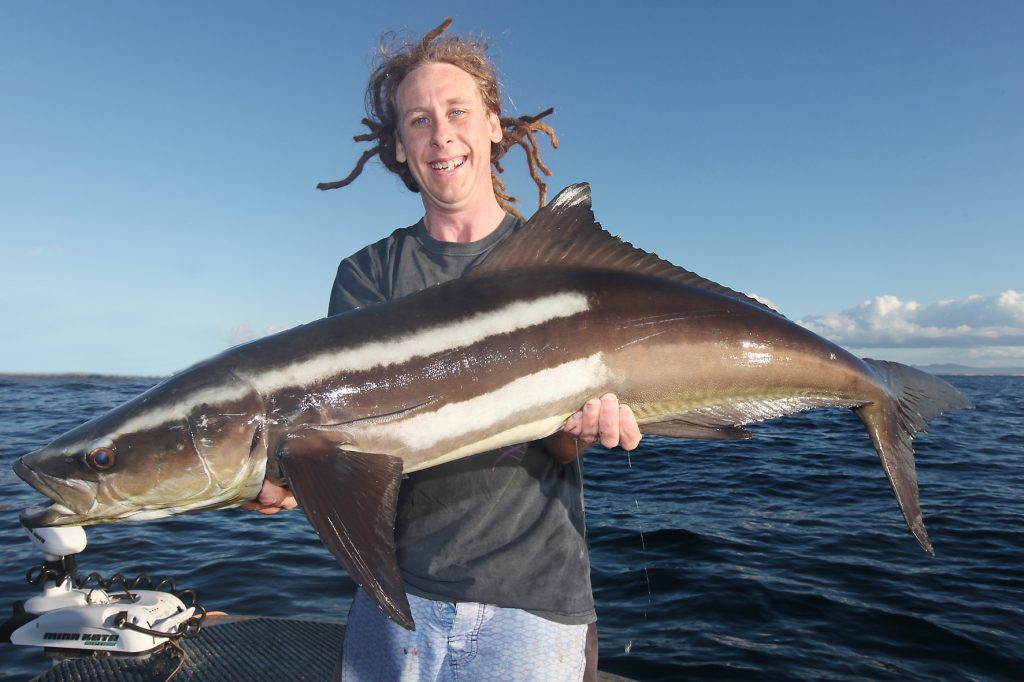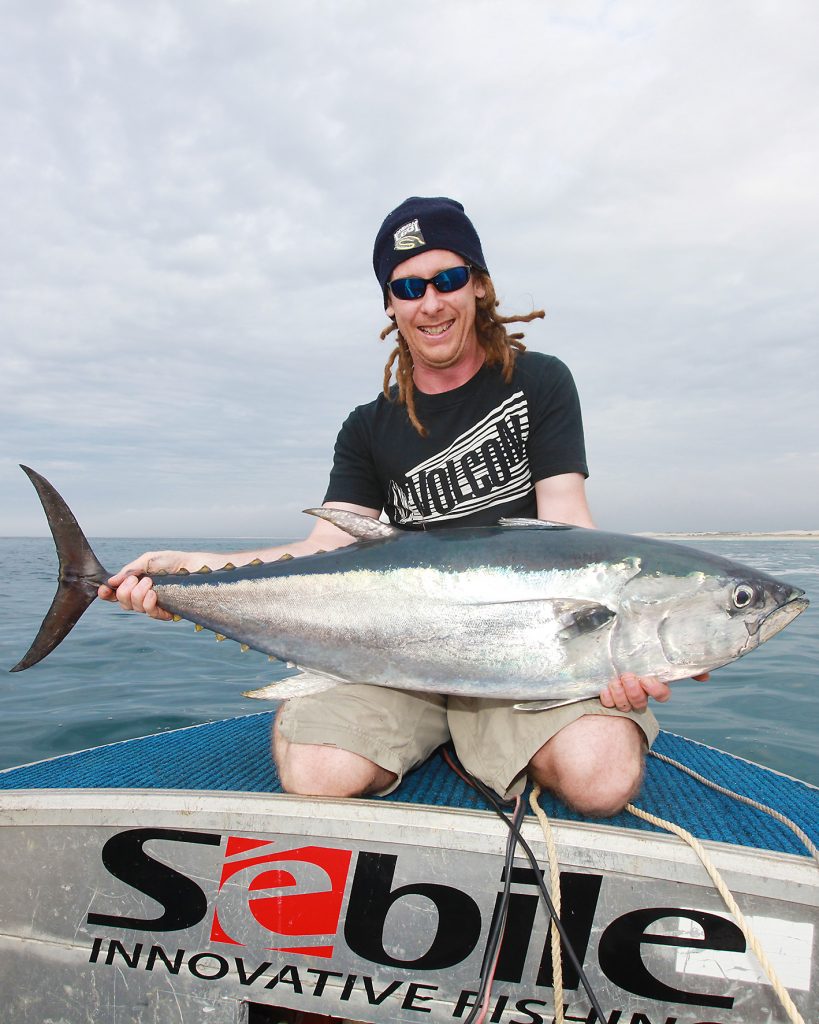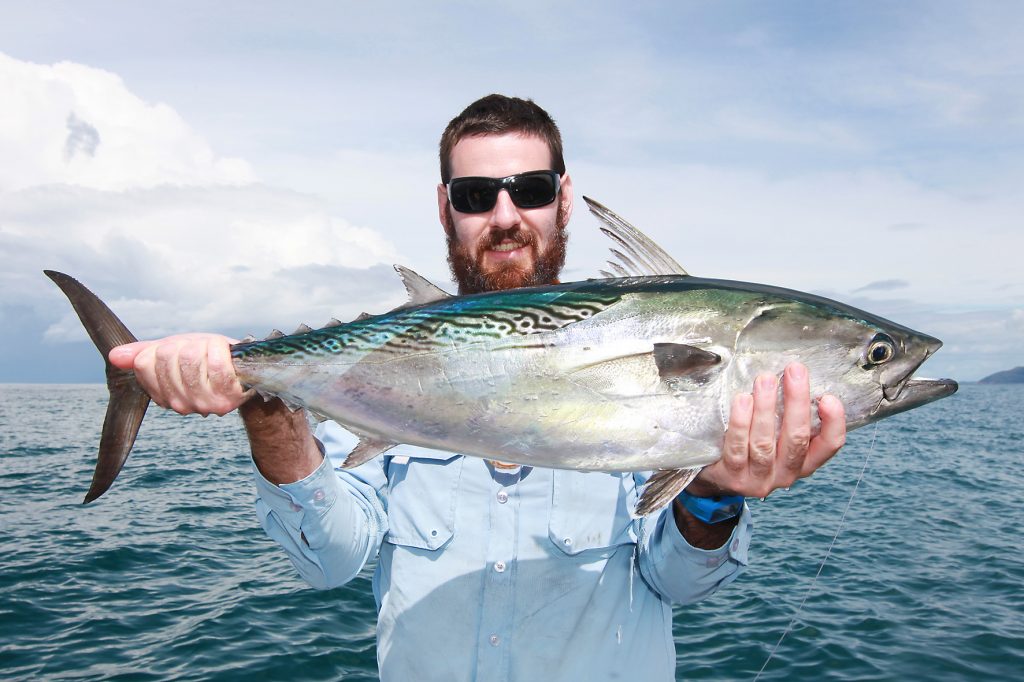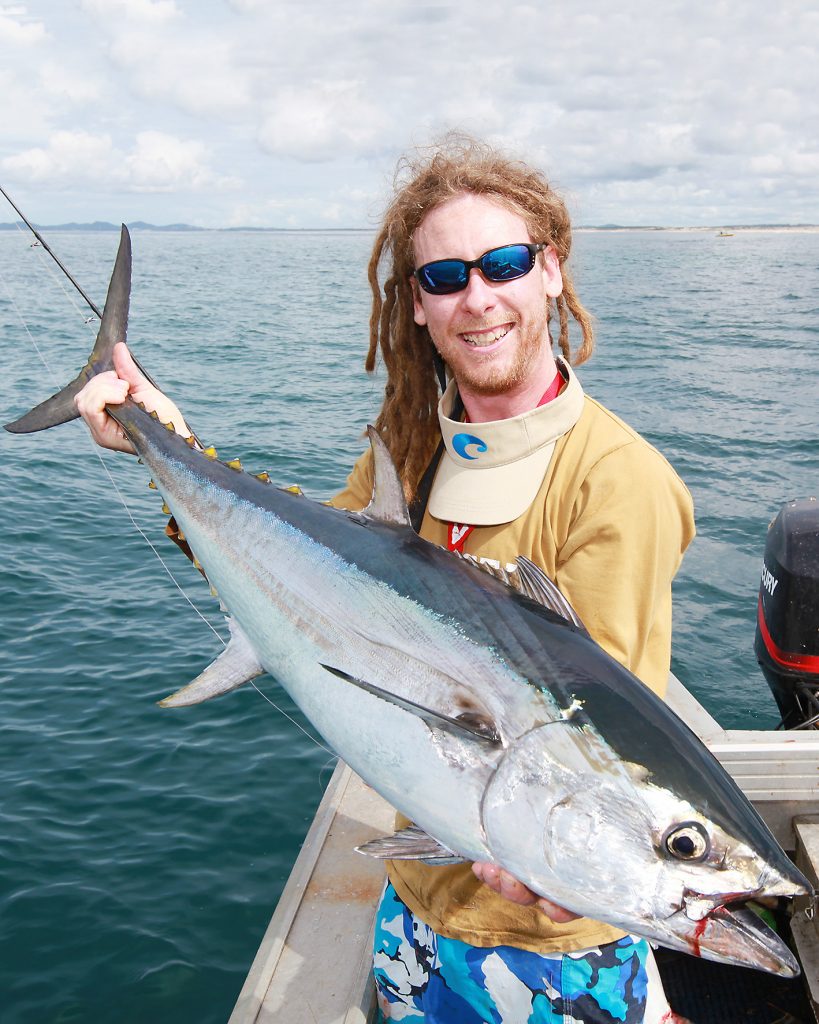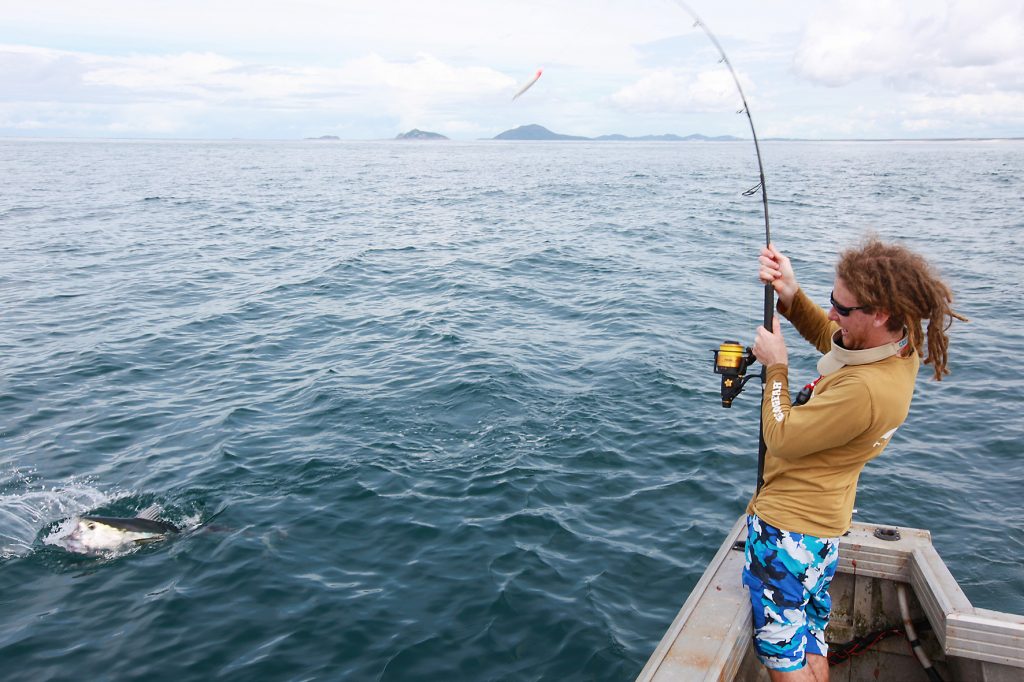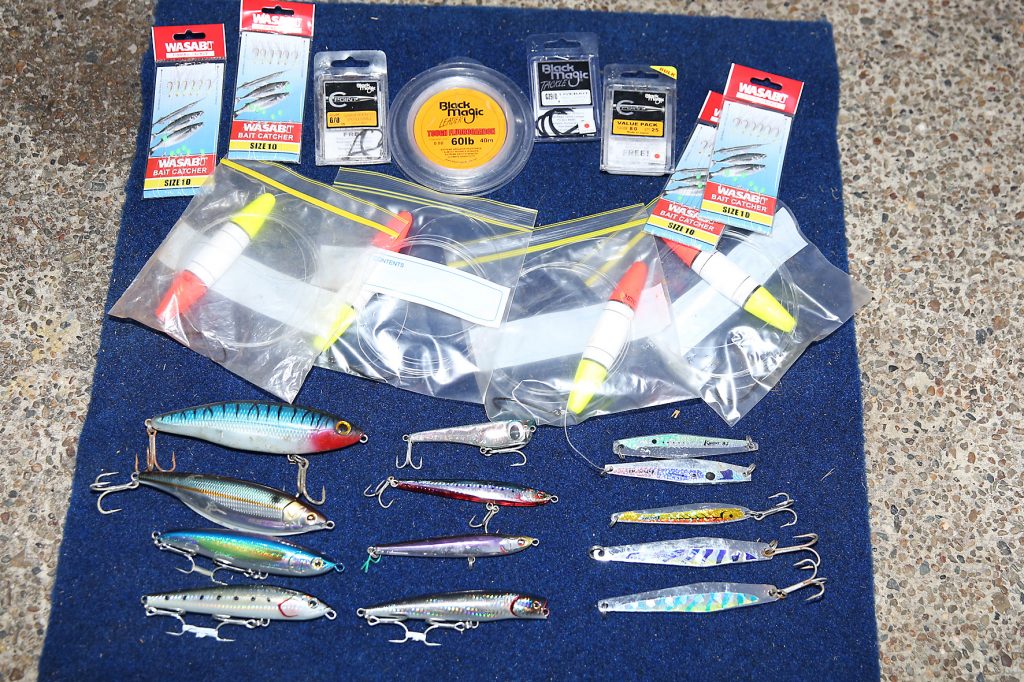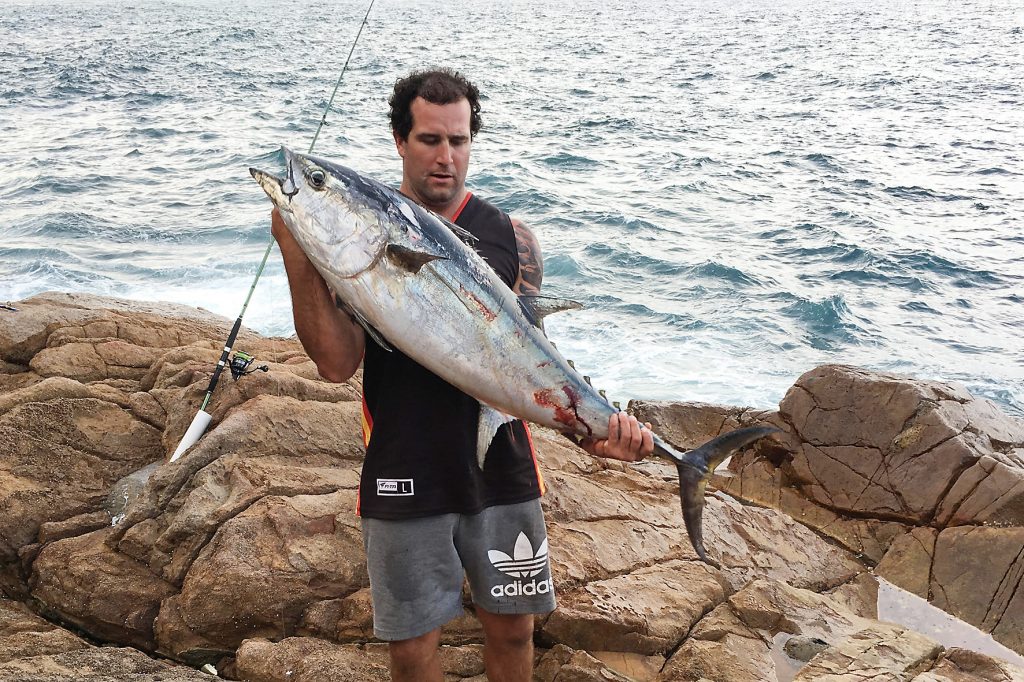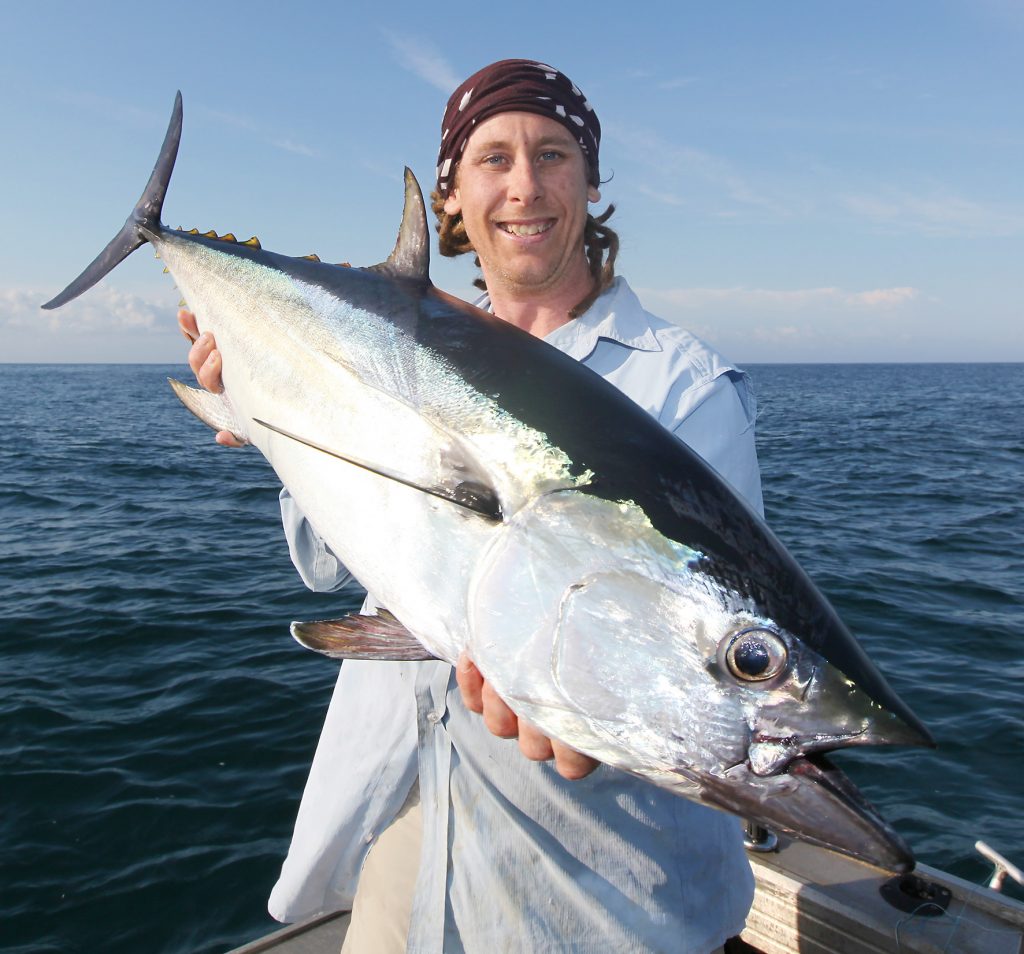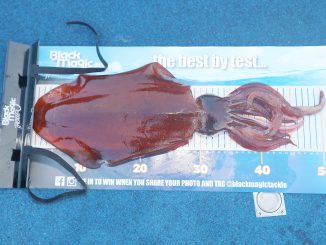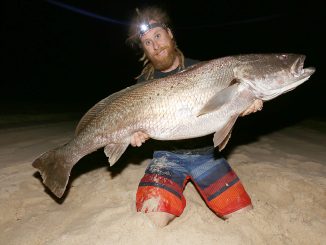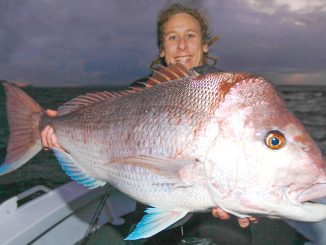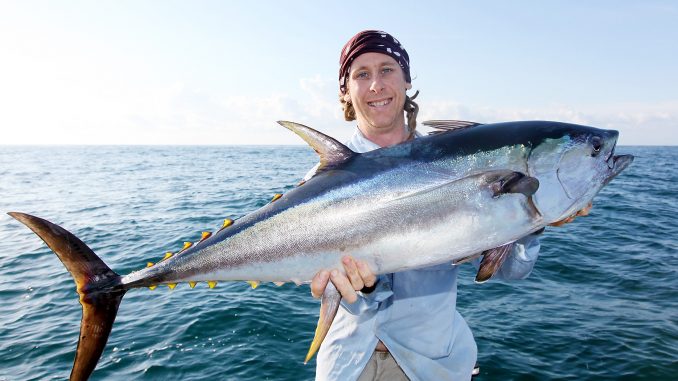
by Paul Lennon •
On the Mid North Coast of NSW the longtail season is one of the most hotly-anticipated times of the year for anglers. This is especially the case for land-based game anglers, and to a lesser extent those fishing out of kayaks or in smaller boats with restricted range.
For those who fall in these categories, longtail tuna are a very special fish. Many regard longtails as pound for pound the best fighting of all the tuna species, which is why being able to target them from the rocks and close to shore is so appealing for anglers.
While longtail tuna can grow in excess of 30kg, the average size in NSW is around 14kg, with anything over 20kg a real trophy fish. They are a coastal species of tuna, meaning they don’t usually venture further than a few kilometres offshore, preferring to hunt schools of baitfish hanging around headlands and shallow reefs. At times they will also move up into some of the oceanic bays of estuary systems, particularly places like my home town of Port Stephens.
While Port Stephens is a renowned area for longtail tuna, it’s also the species’ southernmost stronghold. This is not to say longtails aren’t caught south of Port Stephens, but the consistency and predictability becomes significantly tougher.
One of the biggest reasons chasing longtail tuna can be so exciting is the by-catch that comes with it. This ranges from species that, while entertaining, can at times be a downright pain in the backside. I’m talking about species like tailor, bonito, mac tuna and sharks, which often get in on the action. You’ll also run into more prized species such as cobia, kingfish and to the north, Spanish mackerel and even black marlin!
Tagging studies have shown that longtail tuna can travel huge distances in a very short space of time, with one tagged fish recaptured 850km away from where it was tagged only 20 days later!
Off the rocks
There’s no doubt longtail tuna are most prized when caught from the rocks. Highly-dedicated land-based game anglers will go to great lengths to catch these fish. Depending on the time of year, water temperatures and conditions, these anglers will travel up and down the coast to give themselves the best chance of catching a longtail.
The other thing these anglers do so well, and perhaps better then any other fishing group is network together. It is however a very guarded and tight-knit community who don’t just divulge their information to anyone. Those in the circle are kept in the loop of what’s going on, with constant exchanges of reports from up and down the coast. This allows them to have their finger on the pulse for exactly where the action is. Being privy to this information, especially early in the season when the fish are moving down the coast, is of great benefit. Depending on how far north fish are being caught you can really pinpoint that first bite of the season to being a matter of days or weeks away. Tagging studies have shown that longtail tuna can travel huge distances in a very short space of time.
If you you haven’t caught a longtail from the rocks and want to give it a crack, the best advice I can give you is don’t expect too many short cuts. It’s not as easy as waiting until you hear as few reports of fish being caught. Most of the time a hot bite will be kept pretty quiet and by the time word does get out, the ledge is packed and the fish have often slowed down or moved on.
The best approach is to a get a rough idea when the fish usually show up, and start fishing a few weeks earlier then that. While the tuna might not be there yet, you should be able to cut your teeth on some bonito and mac tuna and get your bait catching skills down pat. It’s also likely that a few more experienced LBG anglers will start turning up, and you will learn a lot from just watching how and what these anglers do. If you’re really lucky you may even get taken under the wing by one of them. This scenario will however be very unlikely if you just rock up with no prior experience once you hear the fish have shown up.
Where to start and what you’ll need
The best time of year to target longtails is from late February through to May, however some years I’ve seen fish getting caught until mid July.
Water temperature and quality plays a big role in success with cold, dirty or water with a lot fresh in it not even worth fishing. The ideal setting is clear water with a temperature somewhere between 21-25°C.
The best areas to fish are usually headlands and points that drop off into deep water, especially places with reefy bottoms that hold baitfish.
Often getting to these areas can be quite a trek, so it’s important to not take too much stuff, but still have everything you need.
Starting with outfits, most anglers will generally take three set ups with them. The first is an overhead lever drag reel loaded with around 600m of 10-15kg mono line on a 7-8ft rod. This is your typical livebait stick, and most of the time it will be in free spool, which is why a lever drag is very important. The other big advantage of lever drag reels for this type of fishing is that maximum drag can be pre-set and then repeatedly backed off and back on when fishing a fish. This can be particularly handy when a tuna is being pursued by a shark, as free spooling can sometimes result in the tuna outrunning the shark. Once it’s in the clear, the pre-set maximum drag for that line class can be reapplied quickly and accurately, and the fight can recommence. The other benefit free spooling can give you is when your fish is heading towards structure or objects such as lobster traps or anchored boats. Backing the reel off to free spool in this situation can often make the fish change direction, and skilled anglers will use this to their advantage.
The most common way to rig a livebait rod up is to attach 2-3m length of 50-60lb fluorocarbon leader to your mainline and then run a torpedo float along the leader to the hook. The float will slide up and hit your joining knot, which will act as a stopper. You can also use a small ball sinker on the leader to keep your live bait down a bit. While many anglers like to use livebait style hooks for longtails, I prefer a suicide pattern around a 6/0-7/0, as I find the hook up rate to be much better.
It’s a good idea to have a few leaders with a float and hook made up ready to go, as fish like sharks and tailor can be a real pain in scuffing up and biting through leaders. Being able to quickly change over a damaged leader will ultimately lead to more time in the water and a greater chance of catching your target.
The second outfit in most LBG game anglers’ arsenal is 30-50lb spin or overhead combo. The reel needs to be capable of holding around 300-400m of 30-50lb braided line and the rod should be around 8-9ft and stiff enough to comfortably throw lures in the 40-85g range. Spinning for longtails is by far the most exciting way to catch them, as it’s often very visual when tuna are actively busting into schools of baitfish, especially gar. This outfit should be always rigged up and ready to grab and throw, as tuna will often suddenly appear out of nowhere and can be gone before you know it. The FG or PR knots are the preferred braid-to-leader connection knots for spinning, as they are very streamlined and don’t restrict your casting distance even with longer leaders. Around 50lb leader is a good size and I like to run about 2m of it.
Lure wise, there is a range of different ones to throw at them, with a few of the most common being 65-85g metals such as Raiders and Knights or stickbait varieties like Maria Loadeds in 140-180mm or Duel Adagios in 125mm.
The third outfit you should always have on the rocks is a smaller 7-8ft rod exclusively for catching your live bait. This doesn’t have to be anything special, just a 4000 size reel and a basic rod rigged up with a bait jig. I find the Black Magic jigs are the best and it’s just a matter of clipping a small sinker to the end and casting out and retrieving with slow lifts and drops. Taking a couple of loaves of bread along with you will also help you in attracting live bait to the ledge, especially when getting bait is tough.
Another valuable LBG tool is the good old fashioned blow up kiddy pool. These are ideal for keeping your live bait, as they take up very little room in your backpack, but once blown up hold plenty of water to keep bait alive. You can also extend the life of your bait by adding an aerator to your kiddy pool. This however will only extend the amount of time between having to change the water, as slimy mackerel won’t last too long without water changes.
Other essentials
One item that you should never be without, and which will potentially save you a lot of heartache, is a long gaff, preferably in a 3-piece configuration. While most of the time someone else on the ledge will have a gaff, you can guarantee the one time no one else is there will be the one time you need it to land a fish of a lifetime!
Rod wraps are another small thing that make life so much easier, as you can secure all your rods and gaff together to form one object. This might not sound like a big deal, but believe me, this makes a huge difference when you’re doing a lot of walking, especially through skinny bush tracks.
Apart from all that, you just need a quality back pack to hold all of your gear, some food and water, and to always LBG with a mate or two! It’s much safer that way.
Doing it by boat
While many LBG anglers call catching them out of a boat ‘cheating’, it’s still a challenge and great fun, the first rule in my book however, when chasing longtail tuna from the boat is to show some courtesy and stay away from the anglers targeting them on the stones. These anglers are fishing there because often it’s the only area along large stretches of coastline where they can get access to fishable water, and not because that’s the only place the fish are. Nothing is more frustrating for a LBG angler then when they have bashed their way through the bush in the dark, spent a couple of hours trying to get a livebait, then finally float a bait out only to have a boat come along and drop anchor right on top of where they’re fishing. Having the luxury of a boat means you can travel to areas LBG anglers can’t get to, so take advantage of this and find your own area to fish.
Look for those isolated headlands or reefs close to shore, particularly those that hold a lot of bait. Overheads with lever drags are again the preferred method when fishing out of a boat for longtails, however larger Baitrunner style reels will also work quite well. Drift your baits a good 30-50m away from the boat and have the reel in free spool with the ratchet on. When it screams off, push the lever to strike and hang on!
The same rigs and hooks as mentioned above apply for out of the boat, with the only real difference being a shorter rod length of around 6-7ft. Again, have a spin rod rigged up just in case they pop up within range.
It also pays to keep berleying while you’re fishing, not so much to directly attract the tuna, but to keep the baitfish around your boat, which in turn will attract the tuna.
When the longtails are on, you can quite easily catch half a dozen or more. One fish will provide a great feed of sashimi or steaks for a few families, however it’s very important to bleed and ice them down after capture, as tuna will spoil quickly. There’s also no need to be greedy, so releasing any extras is a good option. While off the rocks this can be a task, but out of a boat the fish can be easily grabbed around the tail wrist with a glove and gently lifted on board. By doing this they can be quickly unhooked and sent on their way with minimal damage to the fish.
I hope this gives you the confidence to try to share in one of the greatest events of the year for anglers on the north coast.

